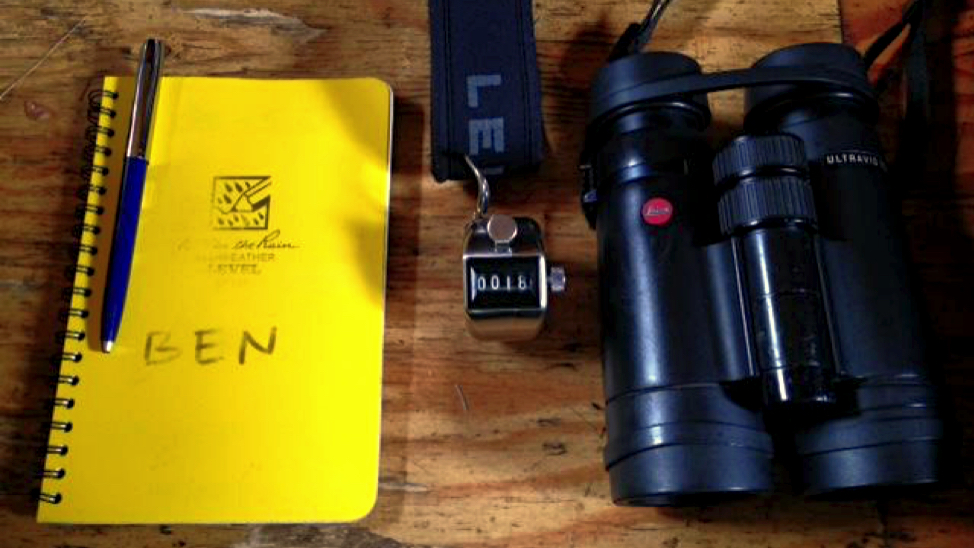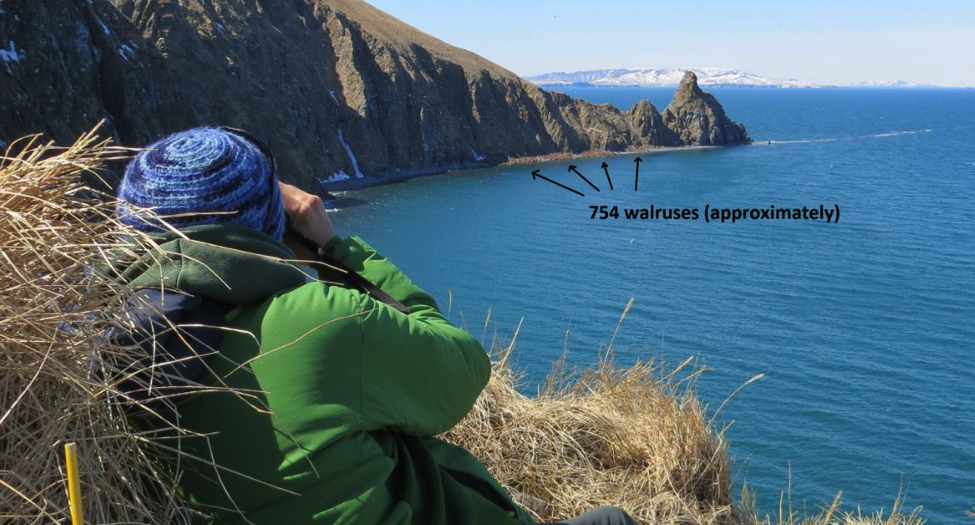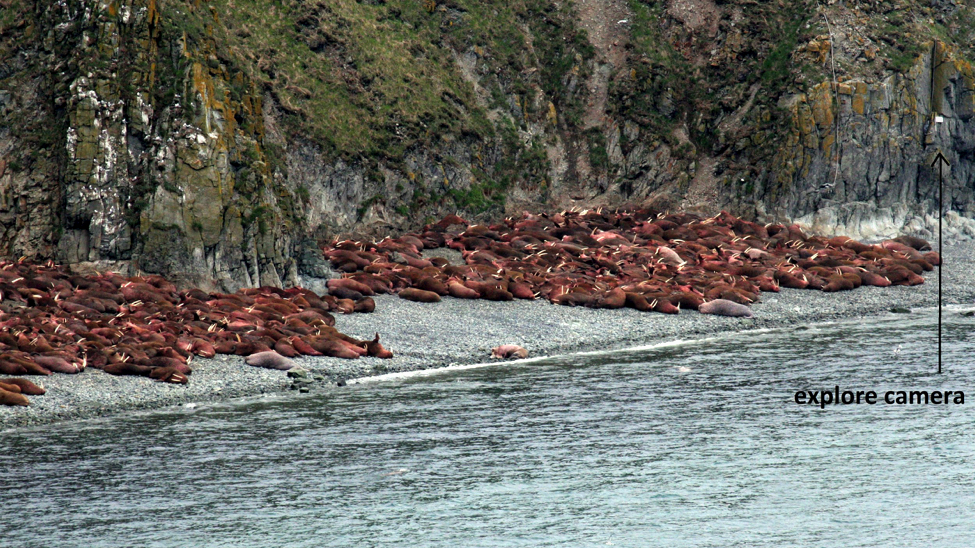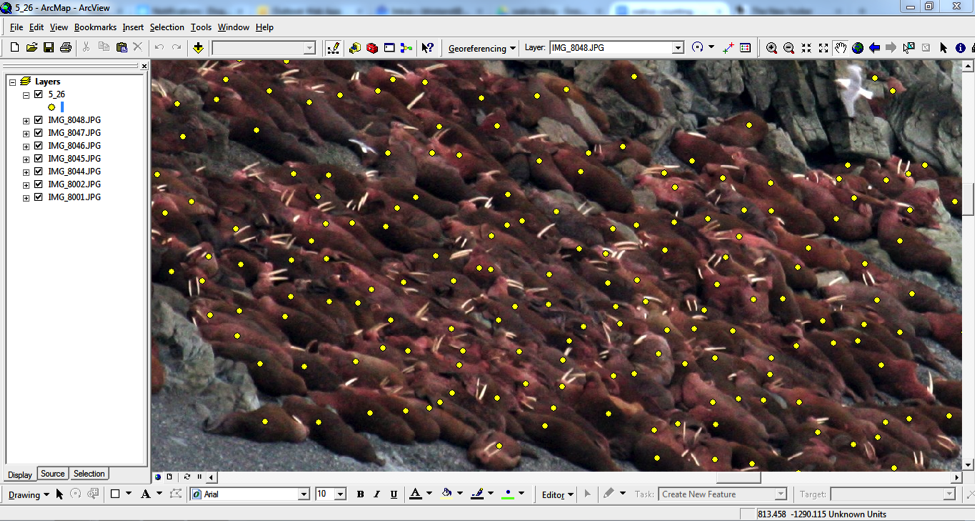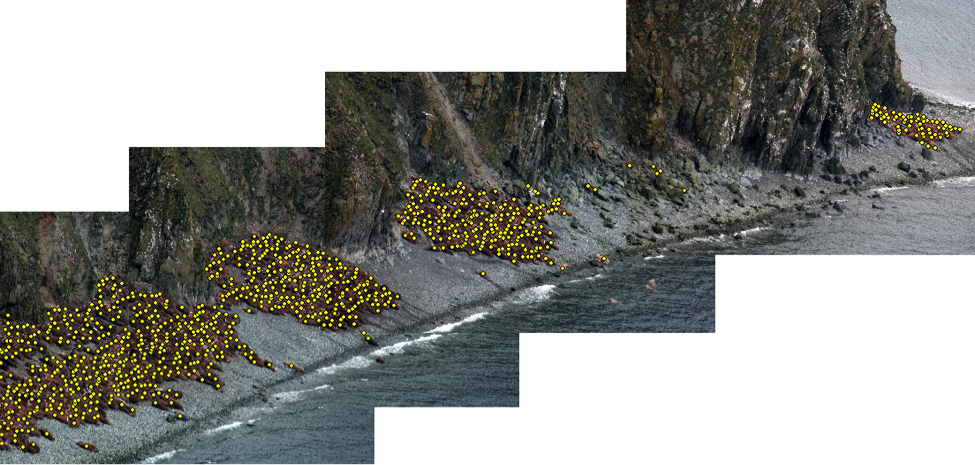Ben Histand of Alaska Fish and Game shifts your view of walrus census.
“Daily walrus counts are the bread and butter of working on Round Island. We do these counts day in and day out, seven days a week, from April to August. They’re the event that the rest of life on Round Island gets scheduled around.
We count ten beaches on Round Island every day. Of these ten, Main Beach (where explore’s primary Walrus Cam is located) often has 90% or more of the animals. It’s important to count the Main Beach animals as accurately as possible, but that’s usually not an easy thing to do. The beach is surrounded by treacherous cliffs, and the nearest reasonably accessible viewpoint is roughly one kilometer (3300 feet) away. From that distance, to the naked eye, the walruses can look like a big brown smear on the beach (though you can usually still hear and smell them). Here’s what we see from the viewpoint:
Binoculars make a huge difference. Our 10×42 Leicas produce a view about like this:
Even so, it’s basically impossible to count each individual animal, especially when there are upwards of 1000 walruses on the beach (wind, rain, and fog pose their own challenges). I usually count by fives or tens, but even then it can take a surprising amount of mental effort to keep track of which animals I’ve already counted as I work my way through a large, dense group. Sometimes I think newspapers should print photos of walruses for people to count, instead of crosswords or sudoku puzzles.
In addition to counting in person, we regularly take photos of Main Beach with a telephoto lens. Back at the cabin, we use a program called ArcGIS to stitch the photos together, and then we scroll through and mark each of the walruses in the photo. This is more time-consuming than the field counts, but it gives a very accurate benchmark we can use to improve our field counting. For some reason, it’s also hard to click on walruses for very long without laughing.
The finished product, with photos stitched together and marked, looks like this:
Pacific walruses have a huge range, and they spend much of their time at sea, so it’s very difficult to get a sense of the total population of the species (results of the most recent efforts are described here). The males that visit Round Island each summer represent a small fraction of the total, but because they’ve been counted consistently for decades now, we have a much better sense of what’s going on in this corner of the walruses’ world.”
